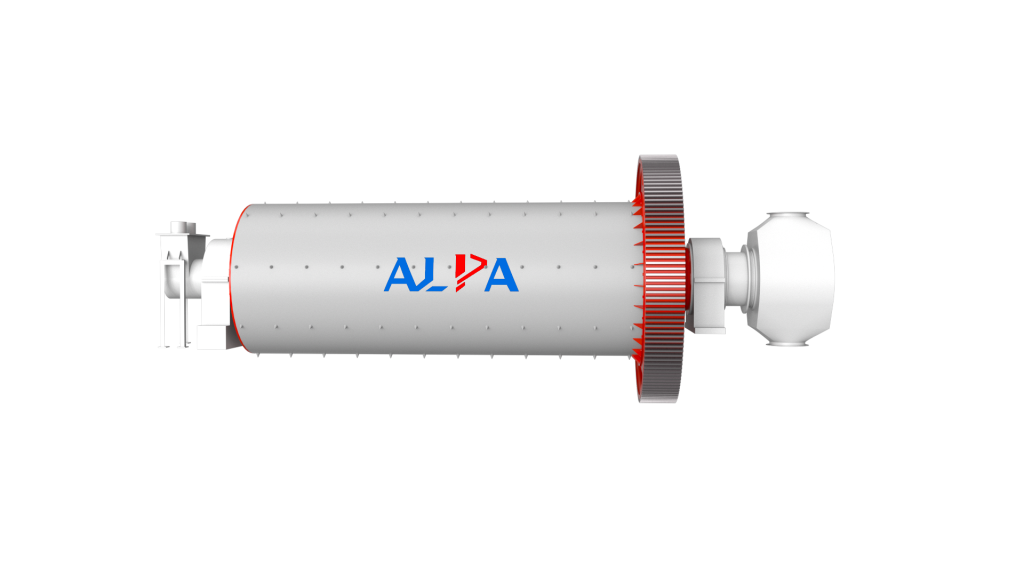The key to improving ball mill efficiency

Factors affecting grinding efficiency
Grinding efficiency is an important indicator of ball mill performance, which is crucial to improving mineral processing efficiency and reducing energy consumption.
Material properties are basic factors, and hardness, toughness, density and fracture characteristics affect the difficulty of grinding.
Mill operating parameters have a significant impact on efficiency, such as speed, filling rate, media size and type. Optimizing the speed can maximize the impact and friction, and the appropriate filling rate ensures effective contact between the material and the media. The type and size of the grinding media are also important. Media of different materials and sizes will affect the grinding efficiency. Choosing the right media can improve the grinding effect.
The choice of grinding process also affects the efficiency. Wet grinding is suitable for fine particle requirements, and dry grinding is suitable for materials with low water content.
The design and maintenance of the mill are also critical. The structural design affects the grinding efficiency, and improper maintenance will reduce the efficiency.
Ball mill speed
According to the kinetic energy theorem, when the mass of an object is constant, the greater the speed of the object, the higher the energy it carries. Similarly, the greater the speed of the ball mill grinding jar, the greater the crushing and grinding energy carried by the particle media particles, and the better the crushing and grinding effect, but there may be problems such as increased energy consumption, increased loss of the particle media itself, and severe heating in the grinding jar; if the grinding jar speed is too low, the energy carried by the particle media may not be enough to achieve the crushing and grinding of the material, and it will not play a grinding role.
Filling rate of particle media
The filling rate refers to the ratio of the internal volume of the grinding jar occupied by the particle media in a loose state to the actual volume of the grinding jar. The filling rate of the particle media in the grinding jar is one of the key factors affecting the grinding efficiency.
Particle size of particle media
According to the impulse equation of the object, objects of different masses carry different kinetic energy at the same speed. In the particle media of the same material, the particle size determines the mass of a single particle. Therefore, choosing the appropriate particle size of the particle media can effectively improve the grinding efficiency.
Ball ratio
The ball ratio is the ratio of the material to the grinding medium, which also has a significant impact on the grinding efficiency. An appropriate ball ratio can ensure that the grinding medium effectively transfers energy to the material. The determination of the ball ratio needs to consider the material characteristics, mill type and expected grinding fineness.
Grinding water volume
During the wet grinding process, the grinding water volume has a direct impact on the grinding efficiency and slurry concentration. The fluidity of the slurry needs to be controlled by adjusting the water volume to ensure good interaction between the medium and the material, while avoiding overloading the mill and reducing the grinding efficiency.
Steel ball size and ratio
In the operation of the ball mill, the steel ball is the grinding medium, and its size and ratio have a decisive influence on the grinding efficiency. Appropriate steel ball size and ratio can effectively improve the grinding efficiency of the material, reduce energy consumption, and extend the service life of the mill.
Improvement of process and equipment
Another key means to improve the operation rate of ball mill is the improvement of process and equipment. With the continuous development of modern technology and the progress of materials science, traditional ball milling process and equipment are facing the necessity of upgrading and transformation.
Fault analysis and prevention
The operating efficiency and stability of the ball mill directly affect the quality and efficiency of the entire production process. However, in the long-term operation process, due to the influence of various internal and external factors, the ball mill often has various faults, such as high main bearing temperature, abnormal running sound, bulging belly and other problems, which will not only affect production efficiency, but also may cause equipment damage and increase production costs.
